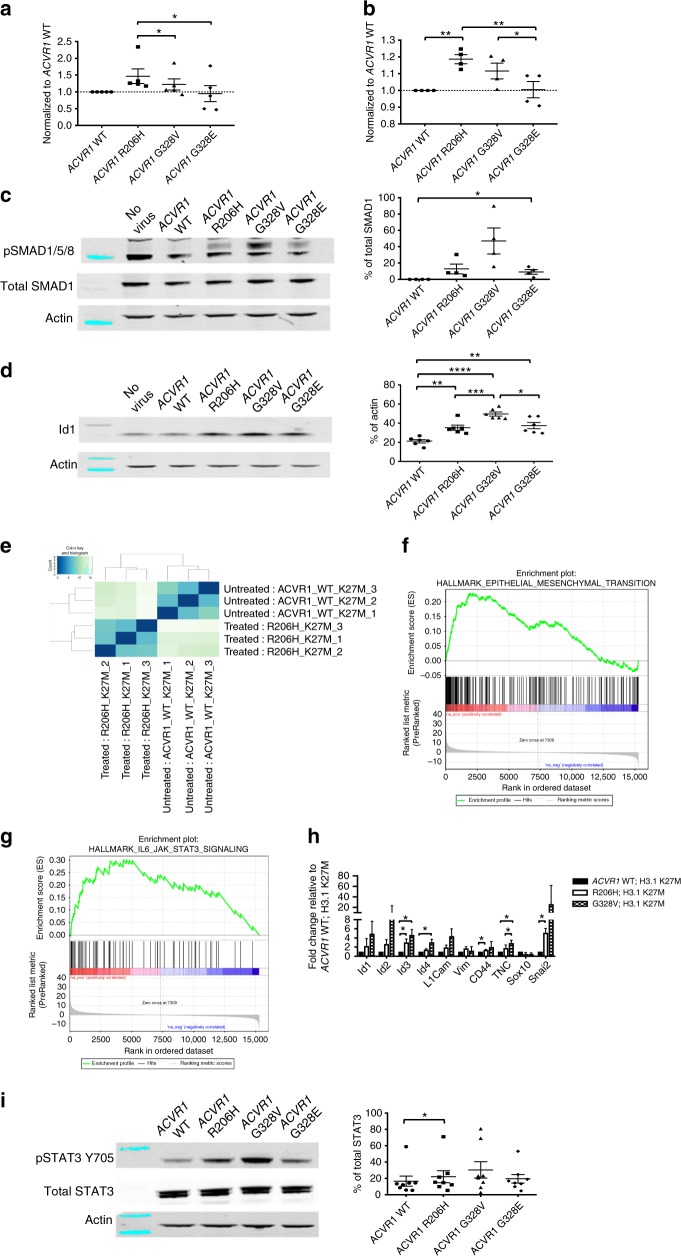Fig. 1.
ACVR1 mutations have differential effects on proliferation and survival. a–d Brainstem progenitor cells isolated from p3 Ntv-a;p53fl/fl mice were cultured in vitro as neurospheres and infected with ACVR1 WT, ACVR1 R206H, ACVR1 G328V, or ACVR1 G328E virus. a Proliferation of infected neurospheres (n = 5). b Cell viability of infected neurospheres (n = 4). c, d pSMAD1/5/8 (c) (n = 4) and Id1 (d) (n = 6) protein expression in infected neurospheres. Also see Supplementary Figure 1. e–h Brainstem progenitor cells isolated from p3 Ntv-a;p53fl/fl mice were cultured in vitro as neurospheres and infected with ACVR1 WT or R206H virus in the presence of H3.1K27M virus. e Heat map of differentially expressed genes between ACVR1 WT and H3.1K27M infected neurospheres compared to ACVR1 R206H and H3.1K27M infected neurospheres based on p value identified by RNA-Seq analysis. Also see Supplementary Data 1. f GSEA enrichment plot of epithelial to mesenchymal transition genes identified by RNA-Seq analysis from (e). Also see Supplementary Data 2. g GSEA enrichment plot of IL-6_JAK_STAT3 signaling genes identified by RNA-Seq analysis from (e). Also see Supplementary Data 2. h qRT-PCR validation of select genes from neurospheres infected with ACVR1 WT, ACVR1 R206H, or ACVR1 G328V and H3.1K27M virus (n = 3). i pSTAT3 Y705 protein expression in infected neurospheres as described in (a) (n = 8). Also see Supplementary Figure 1. All data are represented as mean with SEM, *p < 0.05, paired t test

